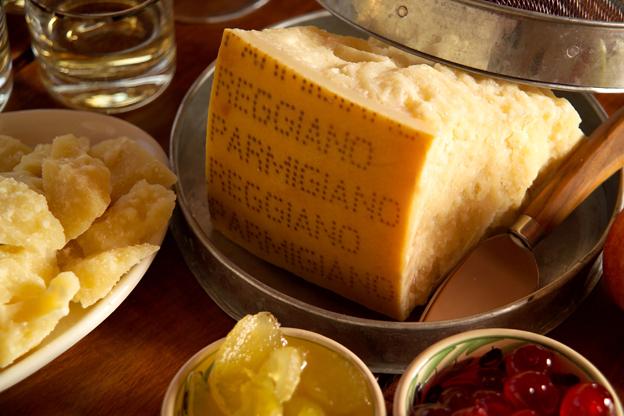Perhaps more famous for its numerous pork products, Emilia-Romagna boasts a strong tradition in the production of delicious cheese as well. From the world-famous Parmigiano Reggiano to the ingenious Fossa cheese, from the pecorini of the Apennines to formaggi freschi such as Robiola, Raviggiolo and Squacquerone di Romagna, you’ll be spoilt for choice as you travel through Emilia-Romagna.
Here’s the cheese lover’s guide to Emilia-Romagna.
Parmigiano Reggiano
Undisputed king of all Emilia-Romagna cheeses is of course Parmigiano Reggiano, famous the world over. Too bad it is also one of the most counterfeited Italian food products, which means many people buying it abroad are often not eating the real thing, missing out not only on its extraordinary flavors, but also on its nutritional qualities – yes, Parmigiano is good for you; in fact, here in Emilia-Romagna, we feed it to children as soon as they get teeth; we say it will make kids grown strong and healthy (and it’s true)! For us adults, in one way or another, it’s almost a daily thing: appetizer, grated on pasta, added as an ingredient to a number of dishes.
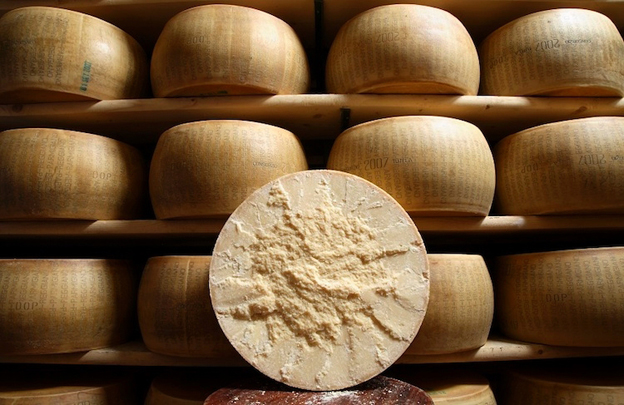
The connection between Parmigiano Reggiano and the land where it’s produced is essential: authentic Parmigiano-Reggiano can only be made in the provinces of Parma, Reggio-Emilia, Modena, Bologna on the left side of the Reno river, and Mantova on the right side of the Po river. If you want to experience first-hand the craftsmanship and centuries-old traditions behind the making of this cheese, visit a caseificio, cheese factory (bonus: you usually get to taste it at the end); when you’re at the restaurant, perhaps start your meal with a classic tagliere di salumi e formaggi, where Parmigiano is always included; and if you want to buy a piece to take home, or even when you’re back home, to make sure you’re getting the real thing, look for the Parmigiano Reggiano DOP trademark on the crust and the package. Ingredients should only list milk, salt and rennet.
Grana Padano
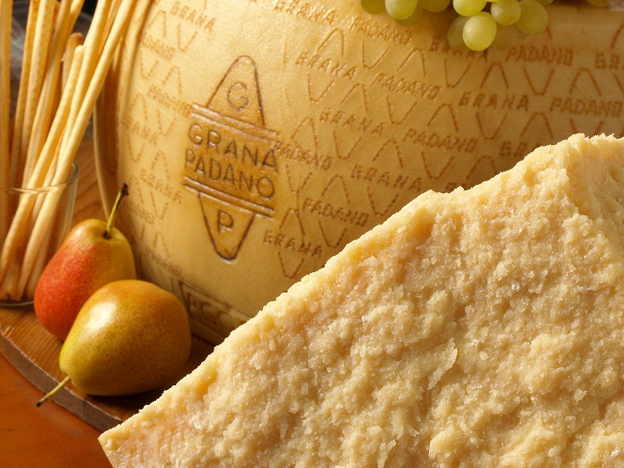
The ‘brother’ of Parmigiano Reggiano, Grana Padano is a semi-fat hard cheese left to age naturally at least nine months, up to more than 24 months. The name ‘Grana’ refers to the distinctively grainy texture of the cheese, while ‘Padano’ refers to Pianura Padana, the area where the cheese is produced. This formaggio is old: the first Grana Padano was produced around the year 1000 by the monks of the Chiaravalle Abbey, who became masters in the art of cheese-making. Grana Padano is produced north of the Po river and in the Piacenza area. Like Parmigiano, it has a cylindrical shape and great nutritional qualities; it is made with milk, salt and calf rennet, with the addition of lysozyme, an anti-bacterial enzyme. Grana Padano is eaten by itself or added as an ingredient during the preparation of many traditional dishes.
Squacquerone di Romagna
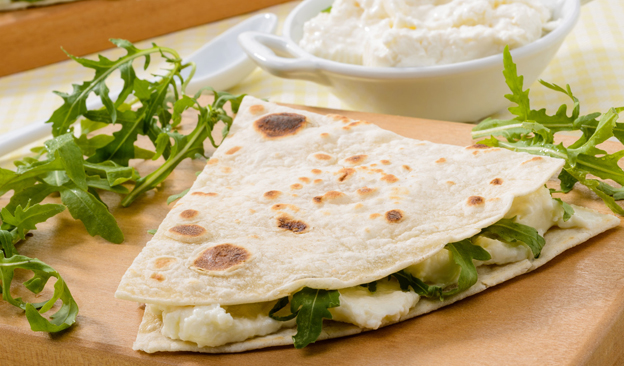
If you like piadina, you must be familiar with squacquerone cheese – together, they are a great match! So if you’re headed to Romagna, the south-western portion of the region, make sure you try the classic piadina squacquerone e rucola; for me, it’s associated with summer and the beach since it’s my typical lunch whenever I spend the day at a beach in Romagna. The cheese’s funny name derives from its tendency to melt, ‘squagliarsi’ in Italian. Squacquerone is a soft cheese made with whole milk, and is left to age for a very brief time, 1 to 4 days. It has a sweet, lightly salted taste and a delicate aroma.
Formaggio di Fossa
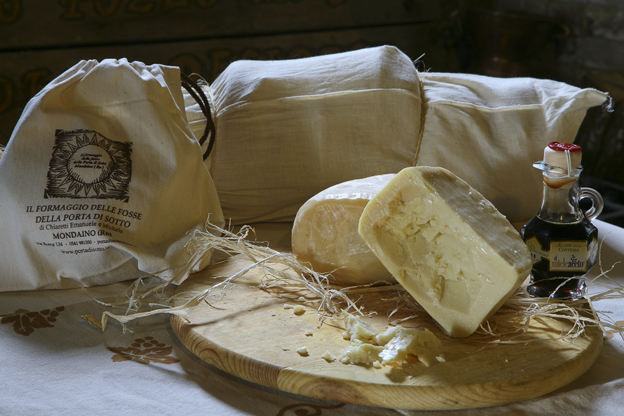
Another cheese from Romagna, this is quite a unique cheese in its method of production as it is left to age in a… pit – hence the name (‘fossa’ is translated as pit). As the story goes, in the 15th century, farmers, tired of raids, began hiding their food supplies below ground. They discovered that cheese came out with a whole new range of flavors and aromas. That habit with time has transformed into art and Formaggio di Fossa is now a highly coveted ingredient even by professional chefs. Produced in Sogliano al Rubicone and the surrounding area between the Rubicone and Marecchia valleys, Fossa cheese can be made with cow’s milk, sheep’s milk or a combination of the two. The cheese typically ages for 30 days before being placed in the "fossa", wrapped in cloth bags. The pit is closed off entirely to limit the oxygen, while the cheese ages for an additional three months. Formaggio di Fossa can be eaten by itself, used in quiches, grated on pasta, or accompanied with honey, which is the unsurpassed combination.
Raviggiolo dell’Appennino Tosco-Romagnolo
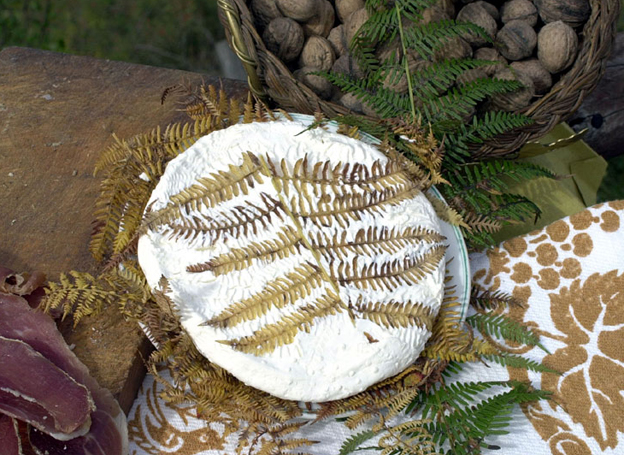
A Slow Food presidium, Raviggiolo is made in the valleys of the Apennine mountains of Romagna. First mentioned in documents dating to the Renaissance, and more recently by cookbook author Pellegrino Artusi, who listed “cacio raviggiolo” among the ingredients for Romagna-style cappelletti, Raviggiolo is made from raw cow’s milk and rennet. As explained on the Slow Food website, during the cheese-making process, the curd is not broken, only drained and salted on the surface, giving the finished cheese a slightly buttery texture. It has a very delicate, almost sweet flavor.
Provolone Valpadana
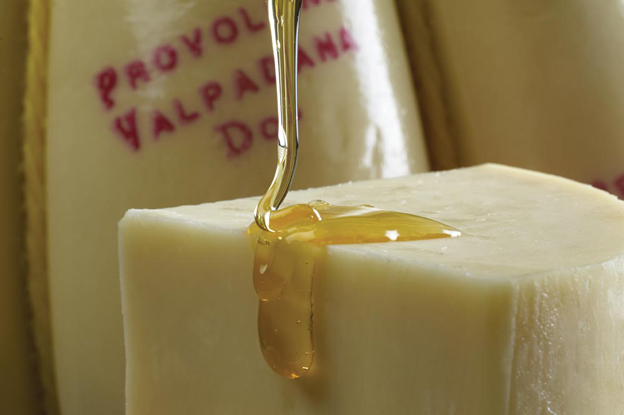
Provolone Valpadana is a semi-hard pasta filata (spun paste) cheese produced with whole milk from cows raised exclusively in the area of production, which in the case of Emilia-Romagna is the province of Piacenza. It originated during the second half of the 19th century, when the tradition of spun paste cheese typical of the south of Italy was adopted by dairies in the Po Valley.
Provolone Valpadana is produced in two variations: the ‘dolce’ (sweet, delicate) kind is ideal cut into cubes and added to salads or for preparing appetizers; it is especially good paired with pears, walnuts and bread, or alone, seasoned with salt, pepper, extra virgin olive oil and herbs. The ‘piccante’ (spicy, stronger taste) kind is delicious served with fresh butter curls or perfect as an ingredient in many recipes, from savory pies to souffles, to second courses of meat and seafood.
What’s your favorite Emilia-Romagna cheese?
